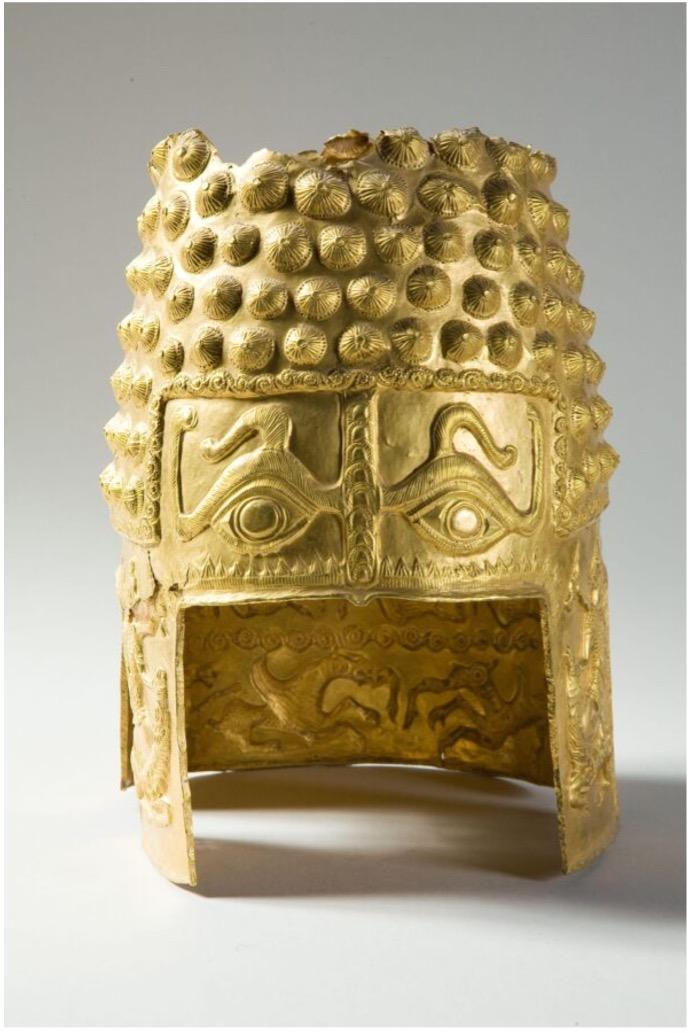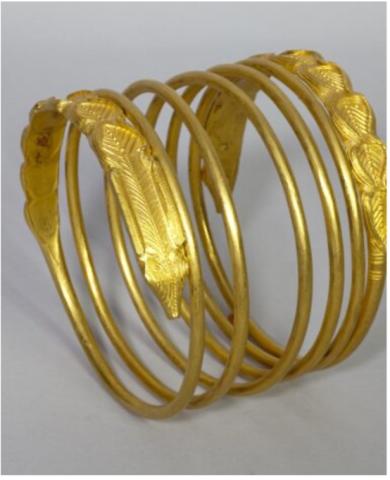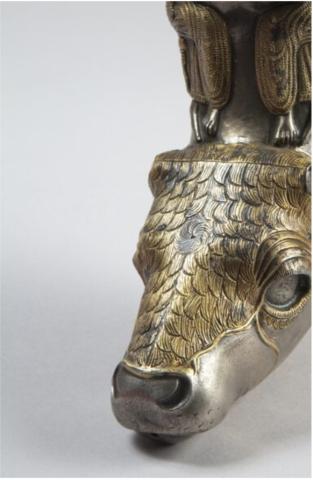'Dacia - Empire of Gold and Silver'
Guided Tour in English
THE ARTS SOCIETY THE HAGUE
Most kindly invites you to join us for a Special Event
On Sunday 24th November 2024 at 13.30 hrs. to
'Dacia - Empire of Gold and Silver'
A Major Archaeology Exhibition in Collaboration with the
National History Museum of Romania
at the Drents Museum, Assen
* I.e. that's meetup at the museum by 13.15.
Those of you who have visited Rome have undoubtedly seen the huge Trajan's column, commemorating the Roman emperor Trajan's victory in Dacia (built in 107-122 AD). It gives the viewer a narrative of the emperor's two campaigns in Dacia. The second campaign by Trajan ended with the death of the Dacian king Decebalus (reigned 87-106) and Dacia became a Roma Province.
King Decebalus was not murdered by the Romans, but took his own life. Many Dacian nobles surrendered or were caught, one of them, Bicilis, disclosed the location of the Decebalus treasure consisting of gold, silver, and artifacts thereof, supposedly buried at the bottom of a river and in the surrounding caves.
Trajan's procurator wrote that the treasure included 2,200 tonnes of gold and 4,500 tonnes of silver – another estimate is given by the French historian Jérôme Carcopino to have been 165,500 kg of gold and 331,000 kg of silver – well in whatever number was found – it makes one's head spin!
This was a little introduction to the wealth of the Dacian kingdom, primarily the income from the precious metals from the silver and gold mines of the Apuseni Mountians and trade/tribute payments from abroad; made it a sought after area to conquer by the ever spreading Roman empire.
The precious objets on display at this exhibition dates from before the Roman conquest. Around 600 wonderfully designed objects will be displayed from at least 15 museums across Romania. The Dacians achieved a very high level of precious metals processing, both technically and artistically.
The objects were used during religious rituals or were offered, such as the solid gold bracelets from SARMIZEGETUSA REGIA, then the capital of the Dacian kingdom. Some of the treasures have been discovered in recent years and have never been displayed in a museum before, so a first for you all!
So why not join us, we have 15 places available!
We normally have lunch prior to our guided tour, by BLUE, whom many of you will know. Would you like to join for lunch at the Pingo Restaurant, where again a special Dacian menu has been composed?
How to book this event:
Special Event Cost [excluding museum entrance]
- For Members is EUR 14.00.
- For Non-members is EUR 16.00.
-
Admission to Museum
-
- For MK [Museumkaart], ICOM, Rembrandt, Vriendenloterij/VIP cards, entry is free.
- The normal museum admission fee is EUR 15.00.
-
Registration is open.
-
The deadline for registration is midnight Wednesday 20th November 2024.
Please note you'll only be added to the list of participants upon receipt of your payment and it's your responsibility to mitigate for any weekend/holiday delays on your bank's part. Please transfer to:
THE ARTS SOCIETY THE HAGUE account NL90 INGB 0008 3198 36.
Prior registration/booking is required.
Please click on this sentence for the registration form.
Cancellation Policy: Please note that fees to attend any Special Events or Lectures of The Arts Society The Hague are non-refundable. If at the last minute you need to cancel your attendance, please let us know so that your place can be allocated to someone on the Waiting List. Alternatively, you are welcome to arrange a replacement. All proceeds go to the on-going support of the Society.
Liability Policy: The Arts Society The Hague does not accept liability for any theft, accident or damage that may occur to those participating in The Society's activities.
OTHER EVENTS
Internship for an outreach project in Arts Dissemination (January-June 2025)





